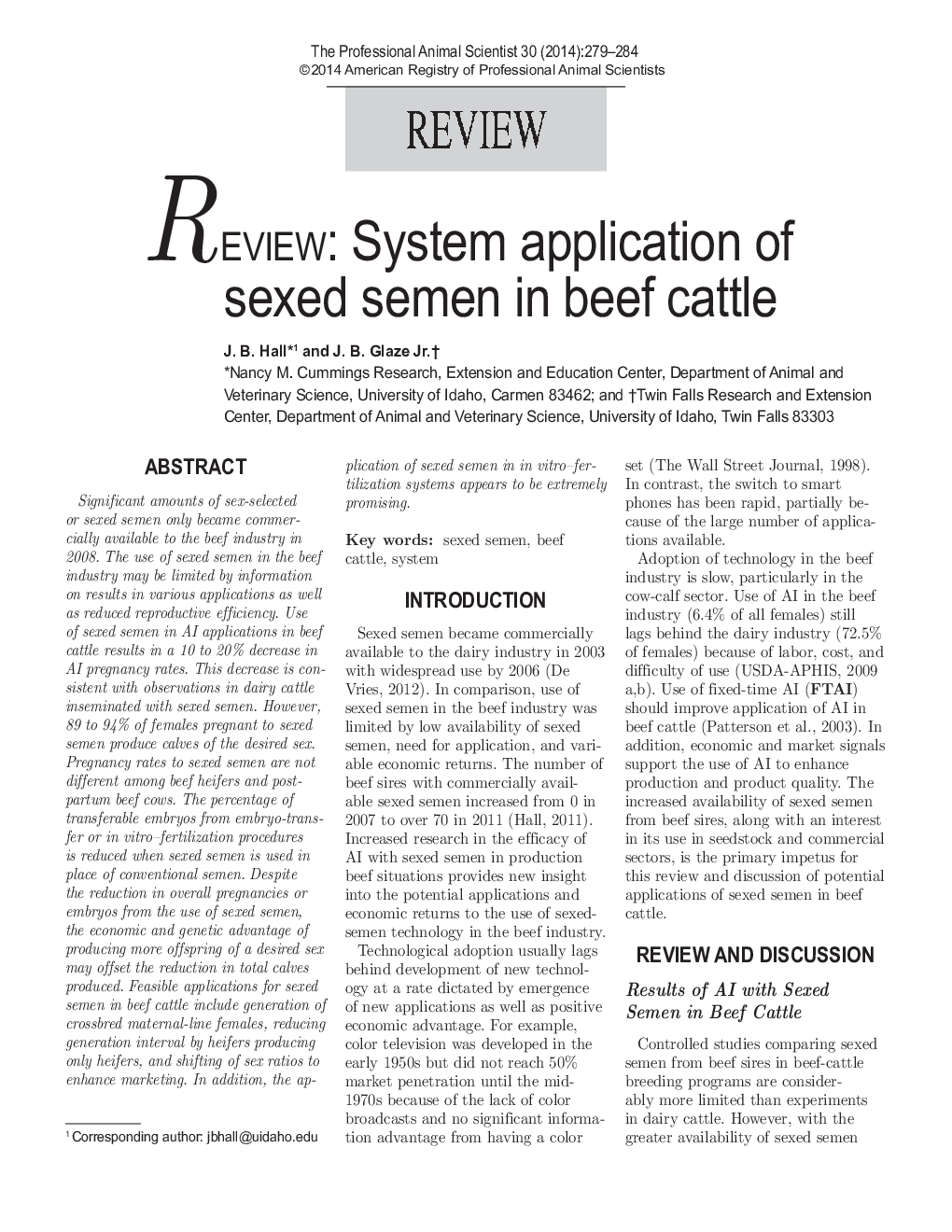| Article ID | Journal | Published Year | Pages | File Type |
|---|---|---|---|---|
| 2453815 | The Professional Animal Scientist | 2014 | 6 Pages |
Abstract
Significant amounts of sex-selected or sexed semen only became commercially available to the beef industry in 2008. The use of sexed semen in the beef industry may be limited by information on results in various applications as well as reduced reproductive efficiency. Use of sexed semen in AI applications in beef cattle results in a 10 to 20% decrease in AI pregnancy rates. This decrease is consistent with observations in dairy cattle inseminated with sexed semen. However, 89 to 94% of females pregnant to sexed semen produce calves of the desired sex. Pregnancy rates to sexed semen are not different among beef heifers and postpartum beef cows. The percentage of transferable embryos from embryo-transfer or in vitro-fertilization procedures is reduced when sexed semen is used in place of conventional semen. Despite the reduction in overall pregnancies or embryos from the use of sexed semen, the economic and genetic advantage of producing more offspring of a desired sex may offset the reduction in total calves produced. Feasible applications for sexed semen in beef cattle include generation of crossbred maternal-line females, reducing generation interval by heifers producing only heifers, and shifting of sex ratios to enhance marketing. In addition, the application of sexed semen in in vitro-fertilization systems appears to be extremely promising.
Keywords
Related Topics
Life Sciences
Agricultural and Biological Sciences
Animal Science and Zoology
Authors
J.B. Hall, J.B. Jr.,
